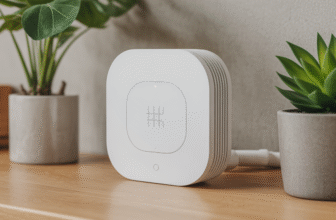
The Rise of Smart Homes and Common Pitfalls
The concept of smart homes has attracted enormous interest among technology enthusiasts, gadget lovers, and everyday consumers alike. Fueled by advancements in IoT (Internet of things) technology, smart homes offer an enticing blend of convenience, security, and energy efficiency.However,this enthusiasm often leads novices into a maze of pitfalls.Understanding these common mistakes can make the difference between a seamless smart home experience and overwhelming frustration.
Choosing Incompatible Devices
One of the primary errors beginners make is selecting devices that are not compatible with their existing home ecosystem. A smart home generally consists of various gadgets that often operate on specific platforms, such as Google Home, Amazon Alexa, or Apple HomeKit. failing to verify device compatibility can result in a jumbled system that diminishes functionality.
How to Avoid Compatibility Issues
Before purchasing any device, always check its specifications to ensure compatibility with the hub you have chosen. Moast smart devices offer detailed details about their integration on their official websites. For a extensive list of compatible devices, refer to the [SmartThings compatibility guide](https://www.samsung.com/us/smart-home/smartthings/compatible-devices/).
Vendor-Specific Ecosystems
Each vendor has its ecosystem, and while some offer a wider range of products, others may focus on niche categories. For example, Apple focuses heavily on security and privacy, while Google emphasizes data integration. Aligning your purchases with a specific vendor’s ecosystem can save you time and complications down the line.
Neglecting Network Infrastructure
A smart home runs on robust wireless connectivity, generally relying on Wi-Fi or Zigbee technology. Many beginners overlook the importance of a strong network infrastructure, leading to connectivity issues and inconsistent performance.
Checklist for Enhancing Network Performance
– place your router in a central location.
– Use dual-band routers to accommodate both 2.4 GHz and 5 GHz devices.
– Consider a mesh network to cover larger properties.
Understanding Bandwidth Limitations
Each smart device demands a certain amount of bandwidth, and exceeding your network’s capacity can lead to poor performance. It’s beneficial to conduct a bandwidth test before expanding your smart home setup. The [norton speed test](https://us.norton.com/internetsecurity/tools/speed-test.html) can definitely help gauge your current capacity.
Overloading the System with Devices
While modularity is one of the hallmarks of smart homes,overloading the system with devices can cause a bottleneck,impairing overall performance. Beginners often want to purchase multiple devices for all rooms but do not consider their cumulative impact on the network.
Optimal Device Count
A recommended rule of thumb is to introduce devices gradually, assessing performance with each addition. This approach allows you to pinpoint which devices add the most value and which may be causing issues.
ignoring Security Measures
Cybersecurity is a prevalent concern for smart home owners. Sadly, many novices fail to implement the necessary security precautions. Weak passwords, lack of firmware updates, and unsecured networks can expose smart devices to vulnerabilities.
Steps for hardening Device Security
- Change default passwords promptly upon installation.
– Regularly update firmware to patch security loopholes.
– Utilize secure DNS (Domain Name System) services, such as Cloudflare’s 1.1.1.1.
neglecting to Read User Manuals
When it comes to setting up smart devices, many users skim over user manuals, opting for the quickest installation method.This can lead to improper setups, causing devices to underperform or fail entirely.
Maximizing device Capabilities
Reading the user manual helps you understand your device’s full potential. Many advanced features are buried in the documentation, waiting to be discovered. Consider participating in forums like [Reddit’s HomeAutomation community](https://www.reddit.com/r/HomeAutomation/) for user insights and experiences.
Failing to Develop a Unified Control Strategy
In a disconnected smart home, users may find themselves juggling multiple apps for device management, leading to confusion and inefficiency. A unified control strategy simplifies interactions, ensuring a smoother user experience.
Centralized Control Options
– evaluate systems like Google Nest for centralized control of devices.
– Leverage routines to automate multiple devices simultaneously.
Inefficient Energy Management
Energy efficiency is one of the key benefits of smart homes. However, improper usage of energy monitoring features often leads to higher bills instead of savings.
Utilizing Energy Monitoring Features
Most smart plugs and thermostats come with built-in energy monitoring features. Regularly reviewing energy usage through integrated apps can significantly optimize your consumption patterns.
Overlooking Regular Maintenance
Just as conventional home systems need upkeep,so do smart home systems. This neglect can result in unexpected failures, requiring costly repairs or replacements.
Maintenance Checklist
– Schedule regular firmware updates.
– Clean and check physical devices for wear and tear.
– Conduct quarterly reviews of your smart home setup.
Assuming Standardization Across Devices
An all-too-common assumption among beginners is that all smart devices will work uniformly.In reality, the smart home industry lacks standardization; so one brand’s user interface may differ vastly from another’s.
Consumer Research Importance
Take the time to research user experiences and reviews on platforms like [CNET](https://www.cnet.com) before making a meaningful investment in smart home products. Understanding user feedback can set realistic expectations.
Failure to Plan for scalability
As the smart home landscape continues to evolve rapidly, many novices miss the importance of scalability. A carefully constructed smart home should consider future expansions and upgrades, preventing potential headaches later.
Designing for Future Growth
– Map out potential future integrations as new technologies emerge.
– Stay informed about new products that can easily integrate with your existing setup.
Image of Common Smart Home Mistakes
conclusion: Your Pathway to a Accomplished Smart Home
Navigating the complexities of building a smart home can be challenging, particularly for beginners. By acknowledging and addressing these common missteps, you can confidently embark on the journey toward a fully integrated and efficient smart home. A thoughtful approach that considers compatibility, security, and user experience not only enhances functionality but also ensures long-term satisfaction and ease of use.






